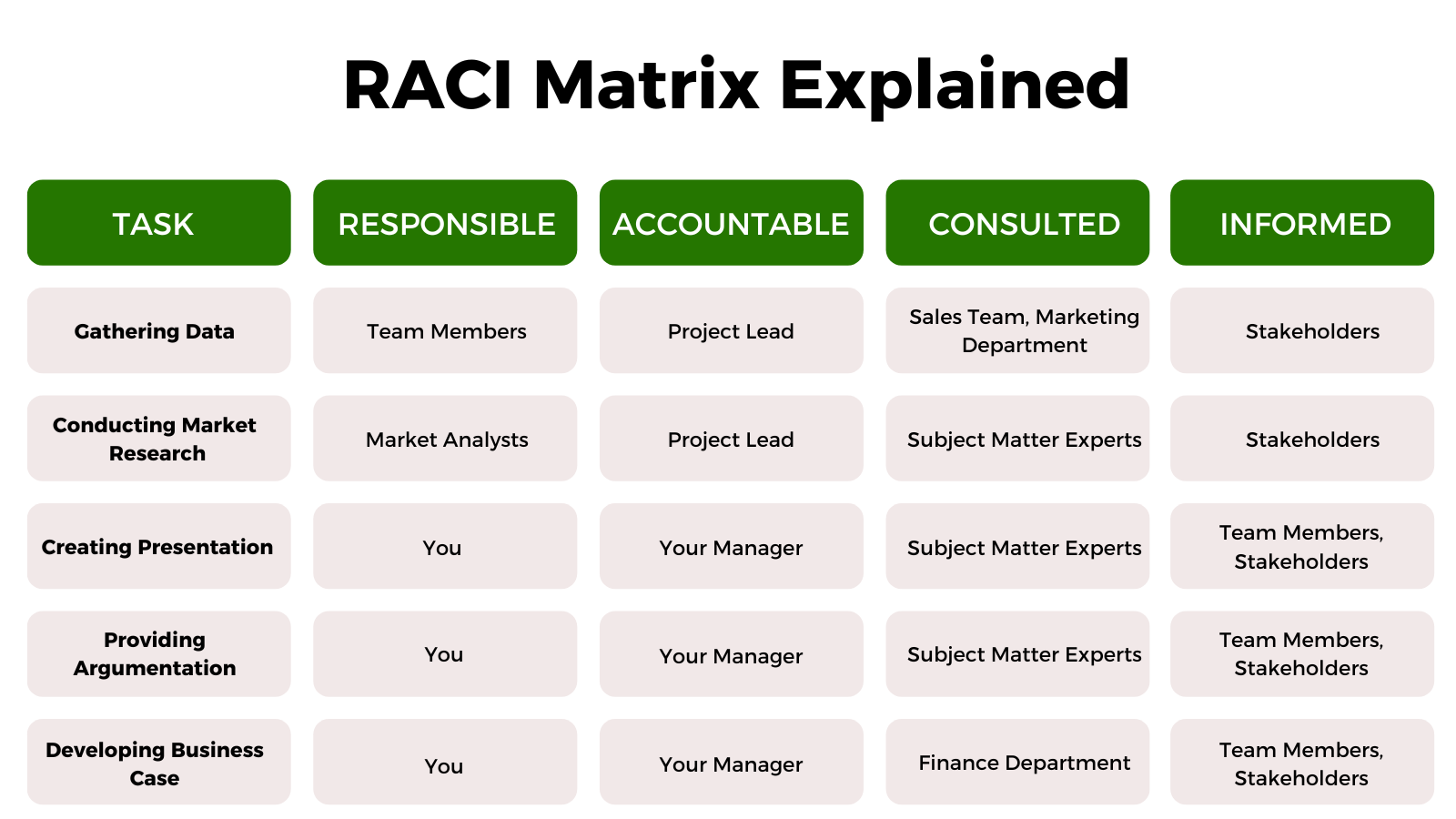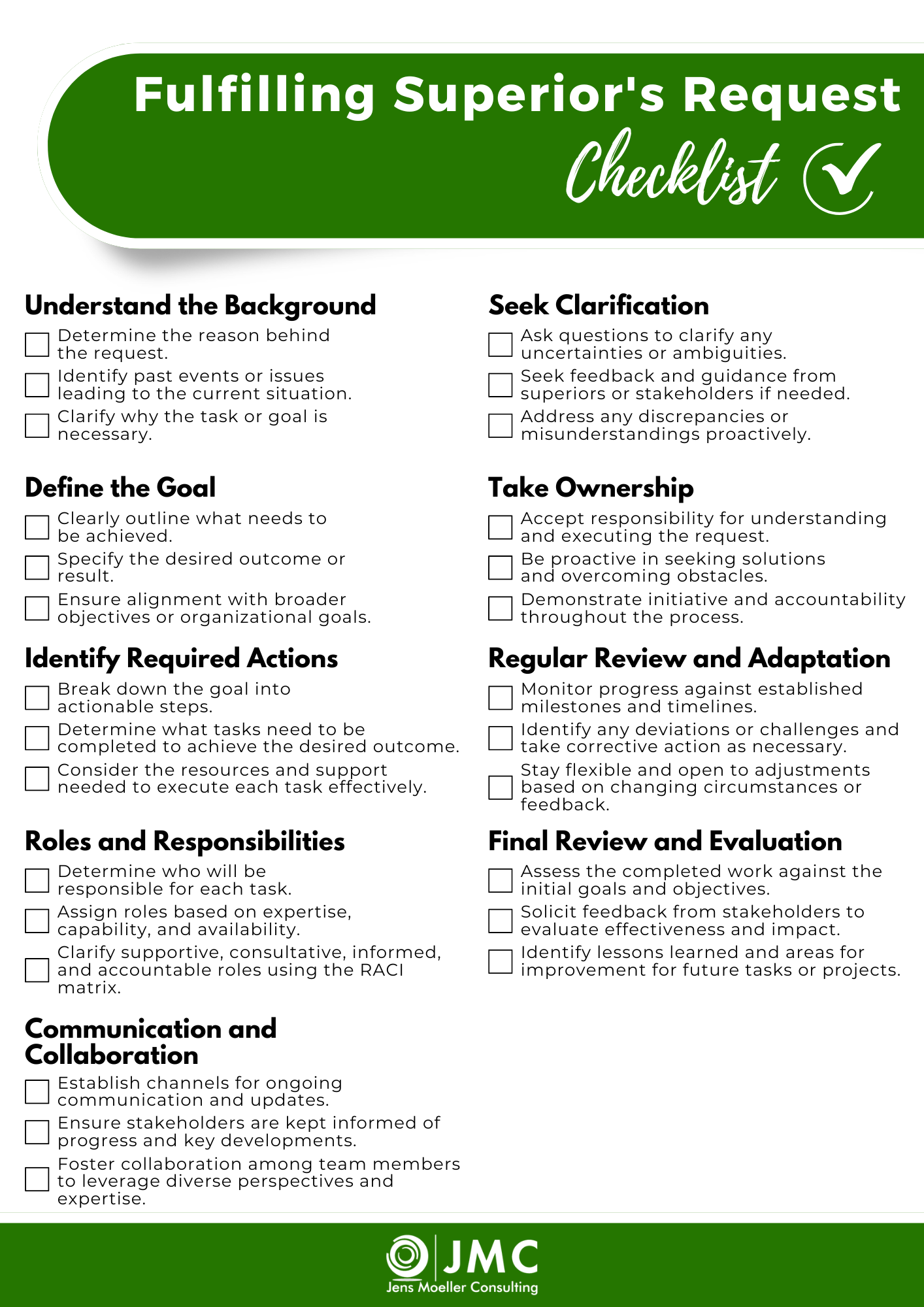A lot of us are getting orders or requests from their superiors, from a steering committee, or the management of the company. And at the end of the day, they find that they walk into the wrong direction, and they don’t feel like they are doing the right thing.
This article is to ensure that you are walking in the right direction when given an order or a request by, either your superior or some committee or even the management of the company.
Let’s start with what is order management. Probably you’ve heard about the expression. Order management contains, clarifying what actually needs to be achieved, what the goal is. And, then of course, specifying, who’s carrying out what, and of course, what needs to be done to fulfill the mission so to speak. So, in a nutshell, we need to make sure that we understand what’s exactly requested from.
Yet in a lot of cases, your superior and, or steering committee will say something like please do this, or build that presentation or run a required analysis. But what they really mean is: some unwelcome situation or has happened before, some unwelcome result been achieved. And before/because of what happened, we want to achieve something. For instance, cost has exploded in a certain area of the business, and now we want to run an analysis in order to be able to make a decision. For instance, on how to structure this area of the business or whether we want to change the processes.
So first, there is a Reason Why as they say in Advertising: why we are actually discussing this topic. Second, there is a goal which we want to achieve. And third, we have an idea about what roughly needs to be done – which needs to be specified later on.
The following understanding is important here: I receive an order from my superior to achieve something – and not (!) an order to do something. The task is often formulated in the form of an action, such as: “create presentation X” or “do analysis Y”. But at the end of the day, there is a reason why we are achieving this task – and we need to understand it in order to fulfil the task well. The reason why must be clear. Then I need to understand what the person giving me this assignment wants to achieve with this action, i.e. the objective.
Once I have understood the objective, I need to understand and, if necessary, ask about the context of the task or project and whether there are certain guidelines: “make sure you do this” or “make sure you don’t do that”. The context is extremely important: something has usually happened beforehand that has led to the fact that you now want to achieve a certain goal/result. Here we are talking about the causes of previous undesirable results or poor performance.
Example: If I have to analyse costs, for example, I may discover that costs have exploded in a certain business area. This is when it becomes important to understand whether certain cost developments (trends) and cost drivers have already been recognised in advance and why the costs have exploded.
Here is a slightly more complex example: Let’s assume you are asked to prepare something for the development of an innovative product or process, such as a presentation or even a business case or prototype. The company is perhaps not yet very innovative and is therefore lagging behind the competition, which may have already digitalised certain processes or products. Now we ask ourselves what (unsatisfactory) results we have achieved with the product, service or process in question – and for what reasons. Ultimately, the results of a service always relate to a specific problem or requirement of our customers that we want to solve or master. It is then important to understand which customer problem the competition solves with which performance parameters and in which quality and what exactly we have to offer in comparison. Then it becomes clear what is to be achieved, how high the benchmark is and what needs to be done. The context is clear.
With larger tasks or even projects, sometimes we can’t achieve the mission by ourselves. Sometimes we need support from others, which brings up the question who is taking which role. A useful tool to define that are the so called RACI or RASCI matrices.

You need to find out if you are supposed to be the person who is responsible for carrying out to the task to fulfill the mission. Let’s assume for our example that you are supposed to build the presentation. It should provide and clarify some options on how to innovate our business. The reason could be, for example, that competition has a lot going for them, which we don’t achieve yet.
So, you need to find out if you are responsible for everything that needs to be done here: to build the presentation, to provide some kind of argumentation for discussion, or to build a business case here. In that case it is a presentation of the business case results.
And in that instance, you need, speaking with the RACI matrix for example,
- People who support you (Supportive role)
- People who you can consult (Consulted role)
- People who need to be kept in the loop (Informed role)
- And then of course, the people who are responsible for the overall result of all this. (Accountable role)
The latter might also be a role which you take yourself.
In any case, you need to clarify for yourself what exactly is a expected from you, in which role you find yourself.
So, to put it all together, you need to know:
- What has happened before. You know: what is the reason why we want to achieve this and that goal or discussing a certain issue?
- What exactly is the goal? What needs to be achieved? What’s the required result?
- What do we need to do to achieve the result?
- And if you have that, then you can think about the roles, who’s doing what, who’s still doing which role, who’s fulfilling which role.
And all this, has a certain challenge built into the into the system, so to speak. Because, when I’m saying this now, it sounds quite easy. But, if you are in this situation talking to a superior or to a steering board, then there might be a certain challenge to understand, what all these cornerstones are. You may expect from the other side that they just tell you. And here’s the challenge: If we expect the others, the superior, the steering board to clarify everything for us, that would be a mistake because they have a different radar. Their radar is at least one or several levels higher than ours. On their level, there is a lot of more topics.
Thus, we need to keep it much simpler to understand for ourselves what exactly is expected from us. What is the thing that happened before? Why are we doing what we’re doing? And then: what is the goal of the whole thing? And then finally, of course: what to do and who takes which role. So, we need to ask the questions. We can’t expect from the superior and the management board to elaborate on everything for us. So, you are the person who is in charge to clarify the order, the request, the project, or whatever it is. For yourself. That is absolute key in the whole matter.
I will also provide a checklist for that, but for the moment being, just keep it as a very important point: You are the captain here, during this task, during this project or whatever it is. You are the person in charge of clarifying everything, so you need exactly what to do and what needs to be achieved for which reasons.

Ready to streamline your approach to fulfilling your superior’s requests and driving successful outcomes? Contact JMC Consulting today at +49 881 394 64 046 or via email at info@jmoellerconsulting.com to discover tailored solutions for effective leadership and project management.
 by Jens Moeller
by Jens Moeller